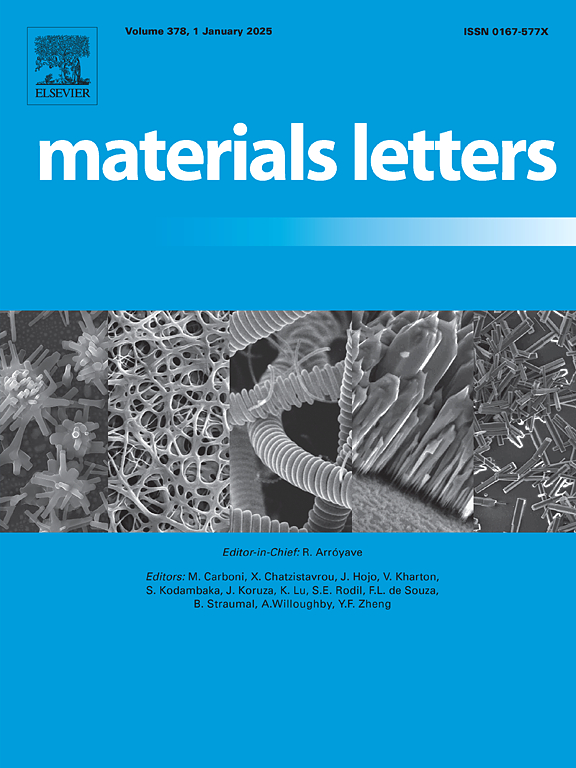Microscale electrothermal uniformity of laser-induced graphene films
IF 2.7
4区 材料科学
Q3 MATERIALS SCIENCE, MULTIDISCIPLINARY
引用次数: 0
Abstract
The control of processing technology plays a pivotal role in the formation of laser-induced graphene (LIG), enabling the multi-functionalization of LIG films. The homogeneity of graphene microstructure, which is essential for the practical application of LIG functional films, yet remains insufficiently studied. In this study, we investigate the effects of defocus amount and scanning spacing on the microscale homogeneity of LIG, especially the electrothermal uniformity of films. The results demonstrate that the LIG lines exhibit progressively greater differences in morphology and composition as the defocus amount increases. Additionally, sheet resistance can only characterize the macroscopic homogeneity, and evaluating the microscopic homogeneity needs to be combined with the microscopic morphology and heat distribution. Overlapping scanning reduces macroscopic electrical anisotropy and improves structural and thermal uniformity (thermal deviation is 2.41%) at the microscale, contributing to high performance LIG film heaters. These findings provide both theoretical foundation and practical guidance for the mass production of LIG functional films.
激光诱导石墨烯薄膜的微尺度电热均匀性
加工工艺的控制在激光诱导石墨烯(LIG)的形成中起着关键作用,使LIG薄膜具有多功能化。石墨烯微观结构的均匀性对LIG功能薄膜的实际应用至关重要,但研究还不够充分。在本研究中,我们研究了离焦量和扫描间距对LIG微尺度均匀性的影响,特别是薄膜的电热均匀性。结果表明,随着离焦量的增加,LIG线的形态和组成差异逐渐增大。此外,薄片电阻只能表征宏观均匀性,而评估微观均匀性需要结合微观形貌和热分布。在微观尺度上,重叠扫描降低了宏观电各向异性,提高了结构和热均匀性(热偏差为2.41%),有助于实现高性能LIG薄膜加热器。这些发现为LIG功能膜的量产提供了理论基础和实践指导。
本文章由计算机程序翻译,如有差异,请以英文原文为准。
求助全文
约1分钟内获得全文
求助全文
来源期刊

Materials Letters
工程技术-材料科学:综合
CiteScore
5.60
自引率
3.30%
发文量
1948
审稿时长
50 days
期刊介绍:
Materials Letters has an open access mirror journal Materials Letters: X, sharing the same aims and scope, editorial team, submission system and rigorous peer review.
Materials Letters is dedicated to publishing novel, cutting edge reports of broad interest to the materials community. The journal provides a forum for materials scientists and engineers, physicists, and chemists to rapidly communicate on the most important topics in the field of materials.
Contributions include, but are not limited to, a variety of topics such as:
• Materials - Metals and alloys, amorphous solids, ceramics, composites, polymers, semiconductors
• Applications - Structural, opto-electronic, magnetic, medical, MEMS, sensors, smart
• Characterization - Analytical, microscopy, scanning probes, nanoscopic, optical, electrical, magnetic, acoustic, spectroscopic, diffraction
• Novel Materials - Micro and nanostructures (nanowires, nanotubes, nanoparticles), nanocomposites, thin films, superlattices, quantum dots.
• Processing - Crystal growth, thin film processing, sol-gel processing, mechanical processing, assembly, nanocrystalline processing.
• Properties - Mechanical, magnetic, optical, electrical, ferroelectric, thermal, interfacial, transport, thermodynamic
• Synthesis - Quenching, solid state, solidification, solution synthesis, vapor deposition, high pressure, explosive
 求助内容:
求助内容: 应助结果提醒方式:
应助结果提醒方式:


